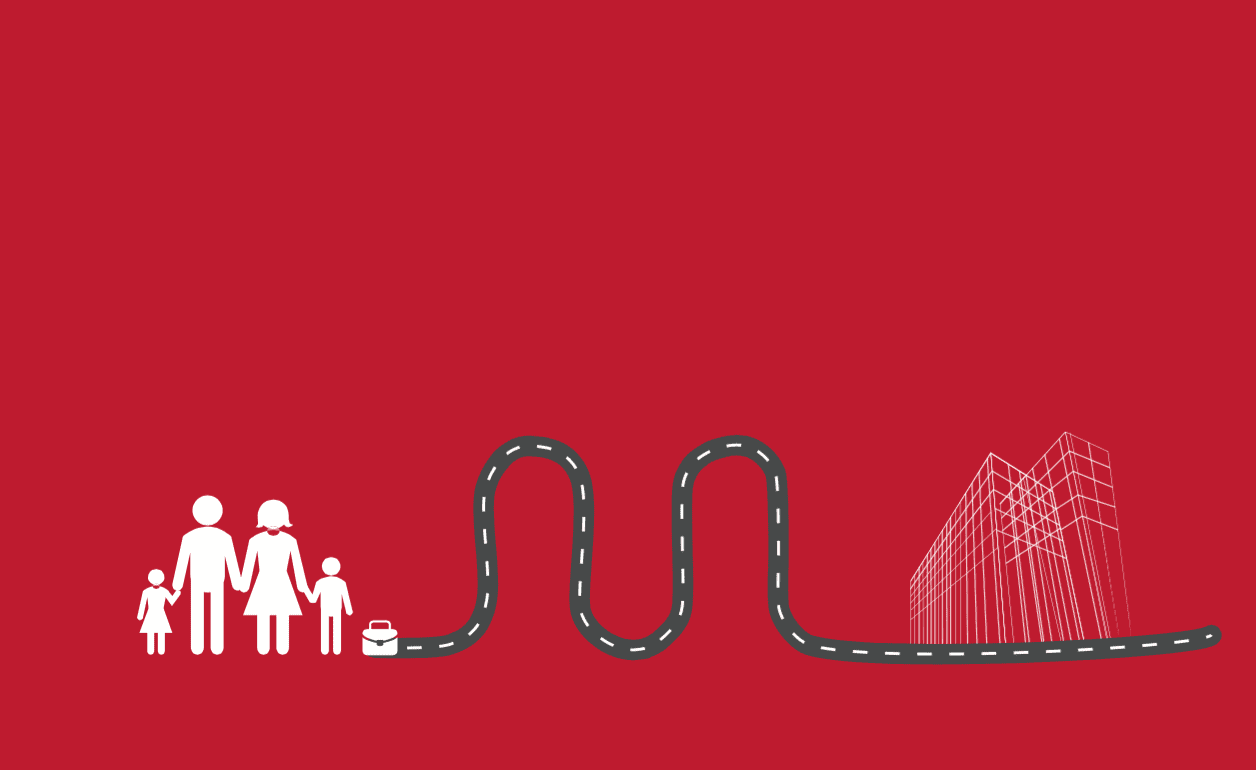Understanding the family business life cycle can be challenging. Dr Eric Clinton explains why succession planning doesn’t have to mean family businesses are constantly going around in circles.
In long-lived family businesses, only one certainty exists: the minefield that is intergenerational succession cannot be side-stepped. And for the fortunate minority that overcome the dangers, the dubious reward is the prospect of negotiating it all over again once the generational cycle comes full circle.
The most significant challenge faced by family businesses is survival from one generation to the next.
Research from Professor Ward of the Kellogg School of Management, estimated that 30% of family businesses will survive to the second generation, but only 12% will survive to the third. Optimising the likelihood of business survival requires family businesses to lay forth a workable plan in securing next generation involvement.
The normative family business life cycle encompasses four distinct phases, according to professors Ken Moores and Mary Barrett, who developed the 4Ls framework and identified these four phases as: learning business; learning our family business; learning to lead our business; and learning to let go of our business.
The first two phases, known as the apprenticeship stage, involve individuals working ‘in the business’. During the final two phases, or stewardship stage, individuals work ‘on the business’. Each phase has a set of priorities, paradoxes and pathways.
In ‘learning business’, the business aspirant discovers both practical and theoretical skills required for leadership, but where best to do so is a topic of universal debate. In the first phase of the cycle, learning sourced outside the family business can prove advantageous. The skills and knowledge acquired outside could later be transposed to the family business. The caveat, of course, is that once outside, the aspirator may not desire a return to the family firm.
Learning the business
While concentration is focused on preparing the successor for eventual leadership, it must be noted that not everyone will be the leader.
During the phase, ‘learning our business’, preparing the successor may run concurrently with planning the incorporation of other family members into the business; possibly by appointment to leadership roles in a non-operational capacity.
The core values of the business, and the incumbents and those who created the business must be examined by those planning to take a leadership role.
Continuity of these core business values is essential for upholding a long-standing business image which both external and internal stakeholders will recognise. However, business leaders must adapt to the continuously changing market, especially when products or industries become obsolete. The next generation must consider how they will ‘continue differently’ in the business. Acquiring business knowledge and knowing how best to implement it are two different things. However, the gap between the two is bridged by what is called ‘a special perspicacity’, which is the insight upon which the third phase ‘learning to lead our business’ is based.
Leading any company is a difficult undertaking, but due to the increasingly expansive family system, leading a company with family involvement is exponentially more challenging. Moores and Barrett’s study of successful family leaders suggest that they possess both business astuteness and well-developed self-insight.
Letting go
Transitioning to the final phase, ‘Learning to let go of our business’ requires a degree of foresight and preparation. Adequate planning is a prerequisite of a smooth transition, as is the willingness of the incumbents to lead their own departure, rather than simply to acquiesce to it.
In the 4Ls framework, there are three main guidelines to follow when stepping out of a leadership role: develop a defined timeline for retirement; create management development systems; and most importantly, stick to the plan.
Stepping out of the business is almost uniformly the most difficult and unnerving part of the succession process for incumbents, and can be particularly challenging for first generation founders of the company. While the incumbent managing director may initially stay back to oversee the aspirator’s transition into the new leadership role, this overlap should not be unnecessarily lengthy.
Transparency and communication is a key factor when such a huge change is taking place and stakeholders, both internal (staff and management) and external (customers, suppliers, financiers), should be made aware of how this transitional stage is being managed.
Incumbents have an essential role in facilitating the appointment of their successor. During the ‘learning to let go’ phase when the potential leader is learning about the family business, they may question the business structure or the traditions held by the incumbent. Communication, therefore, is vital. Any business-oriented queries, concerns or taboo topics should be aired. Incumbents should encourage aspirators to gain outside knowledge and experience, but, the decision of potential successors to join the business or pursue a leadership role should be made voluntarily. Also, an incumbent leader should recognise the possible need for an outsider to fill a managing role, either temporarily or indefinitely.
Appointing a successor
Family businesses which embrace the learning curve set out in Moores and Barrett’s 4Ls model position themselves as ‘families in business’ or ‘business families’ according to Prof. Justin Craig of Northeastern University in Boston. “By signalling to the next generation that, while we the incumbents have concentrated on a particular business which has served the family well, the leaders appreciate that this industry or this particular business may not be as attractive or have the same meaning to following generations,” said Prof. Craig, who was a guest speaker at a previous DCU family business workshop. In turn, this attitude fosters entrepreneurship and encourages innovation. The core business resources can enable the next generation members to pursue their own entrepreneurial activities.
Ensuring the survival of family businesses is of economic, social and cultural importance to Ireland. “For generations the heartbeat of Ireland was driven by family businesses,” stated An Taoiseach Enda Kenny at the launch of the DCU Centre for Family Business.
Approximately 75% of all Irish firms are family businesses and together they contribute greater than 50% of the country’s gross domestic product. Apart from providing direct and spin-off employment, family businesses are significant contributors to local community investment, philanthropic efforts and the historical or cultural importance of their locality.
Opportunities for family businesses are immense. The potential to internationalise, diversify product lines and innovate are open avenues for growth.
One of Ireland’s oldest family-owned food producers, Flahavan’s Porridge Oats, generated further growth for their business through strategic alliances with other companies, the most eye-catching of which was a near-perfect marriage of the old and the new when in 2013 they brokered a deal with McDonald’s to sell their porridge oats in 84 McDonald’s restaurants nationwide.
While most family businesses are categorised as small and medium enterprises, there are those who have achieved national, international and even global recognition. From the national success of ubiquitous Irish family brands such as Barry’s Tea, Keelings and Brennans bakery to the multinational eminence of US giant Wal-Mart, family businesses across the world have shown themselves to be capable of becoming market leaders.
Dr Eric Clinton is a lecturer in entrepreneurship at DCU Business School and principal investigator in the Centre For Family Business.





